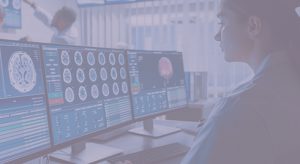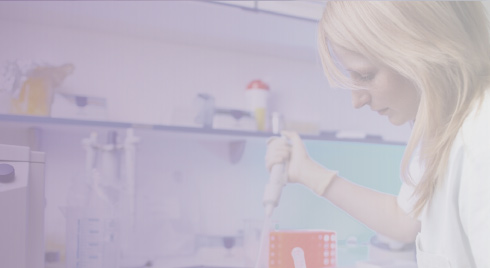
Do you enjoy mathematics, statistics or probability? If so have you thought about a career as a Biostatistician in the pharmaceutical sector? Working in Biostatistics can be a challenging and interesting position that enables you to be very influential within a clinical development team.
To help those who are looking to start a career in this sector we recently conducted an interview with one of our contractors who is a Biostatistician working within the pharmaceutical industry. We wanted to find out what a Biostatistician does, what a typical day is like, what are the best bits and where can this career lead you. They really gave in-depth and inspirational answers to the questions, which will help anyone considering a career in this area:
What does a biostatistician do?
A Biostatistician working in clinical development within the pharmaceutical industry provides statistical support to a clinical study (or a group of studies) through its (or their) conception, design, conduct, analysis, and reporting.
Clinical Biostatisticians work in all of the four phases of clinical development, and work closely according to regulatory guidance documents (where these exist). Biostatisticians may also become involved in the analysis of efficacy and safety data which are integrated across studies in an appropriate manner. Biostatisticians at all levels routinely work globally, where the ability to communicate using email, teleconferences and internet meetings is as important as face-to-face meetings.
Experienced Biostatisticians may take on responsibility for all statistical activities for a particular drug or indication, supervising the work of other Biostatisticians on the project, and providing statistical input to the clinical development plan and regulatory strategy.
What is a typical day like for a biostatistician?
A typical day for a clinical Biostatistician depends entirely on the stage at which a particular study is at:
The Biostatistician has much to contribute to the planning of a new study, which is not limited to sample size planning and pre-specification of the proposed analysis in the protocol, although these are certainly important activities. Other activities at this stage typically include contribution to clinical team discussions on study objectives and the choice/definition of the primary endpoint, which might also involve liaising with external experts and opinion leaders.
Once the study protocol has been approved, the Biostatistician will present key features of it at the investigator meeting. He or she will then prepare the randomisation schedule and advise on its implementation (for example using an Interactive Voice Response System).
The Biostatistician also reviews the design of the forms used for capturing the data at study sites and the database design itself, to ensure that the data will be captured completely and correctly. Whilst the study is being run, the biostatistician is then consulted about any ongoing study conduct issues (for example the possible impact of any protocol deviations on the analysis), and liaises with the Study Data Manager regarding any data issues arising during the cleaning of the database.
Prior to unblinding the database (for a blinded study), the Biostatistician will prepare the Statistical Analysis Plan, which describes the proposed analysis in detail, and will agree this document with the clinical team, normally after considerable discussion. The Biostatistician will work closely with the study SAS programmer who will write the SAS programs to perform the analysis; in practice, the Biostatistician may also write some SAS programs, and he or she will certainly perform validation and review of the SAS programmer’s work.
After the database is unblinded, the Biostatistician will be very busy finalising the analysis. Once he or she is happy that everything is correct, the results will be presented to the clinical team. The Biostatistician needs to present the interpretation of the key findings in a way that is suitable for a non-statistical audience.
Finally, the Biostatistician will be considerably involved in writing and reviewing the full Clinical Study Report, and any manuscript submitted for publication of the study results.
How did you get into biostatistics?
Following a strong aptitude for/interest in mathematical subjects at school, I chose to study mathematics at university, specialising in probability/statistics options in my final year. This prepared me well for the MSc I subsequently took in statistics in my additional postgraduate year.
Having come from a strong medical family background (both my father and grandfather were GPs and my mother was a nurse), I considered the medical application of statistics to be a good combination of my skills, interests, and background.
What do you enjoy most about your job?
I enjoy problem-solving aspects, whether it is at the trial design stage (working with a clinical team to define a trial objective and implementing a statistical approach which maximises the chance of that objective being reached), or the analysis stage (interpreting trial results, particularly when they are not straightforward and the study conclusions are not clear cut).
What is the hardest part about being a biostatistician?
Although deadlines are important in the pharmaceutical industry in order to add purpose and urgency to the work, it can certainly be very challenging when those deadlines are so tight that there is insufficient time for a particular problem to be thought through properly, or when the Statistician is not included in the relevant discussions.
What can this type of job lead to?
Biostatisticians working in pharmaceutical development can work for a pharmaceutical or biotech company, where they are more likely to gain a deeper knowledge of specific product development within a particular therapeutic area, and of the associated strategic and regulatory issues. With appropriate experience, this can lead to responsibility for all statistical activities for the development of a specific drug or a particular indication.
Alternatively, Biostatisticians may work for a clinical research organisation (CRO), which offers broader exposure to different development compounds, therapeutic areas, and sponsor companies. A CRO generally offers more opportunity to be involved with project management such as timeline and budget planning for statistical tasks, and with more experience, Biostatisticians may also contribute to business development activities.
Opportunities to line manage teams of statisticians and programmers exist in both pharmaceutical companies and CROs, although increasingly functional managers are expected to do some project work. In both types of organisation, there are possibilities to contribute towards process improvement activities.
For those experienced Biostatisticians who prefer to remain more “hands-on” rather than pursue a company career path, opportunities exist to work as a contractor rather than as a permanent employee, generally working in-house at a client company site. There are also limited opportunities for ad-hoc statistical consultancy, especially for smaller companies. For all career options, the possibilities for flexible and remote working have improved considerably within the last decade, especially with the increase in technology.
What advice would you give to somebody considering biostatistics as a career?
For anyone choosing to work as a biostatistician in the pharmaceutical industry, especially in these uncertain times when it is imperative to keep marketable, I recommend maintaining hands-on skills at analysing and interrogating data, regardless of the career path chosen. Despite the presence of an established SAS programming function in our industry, it remains crucial that the statistician is able to know their data well.
You may also like to read:



